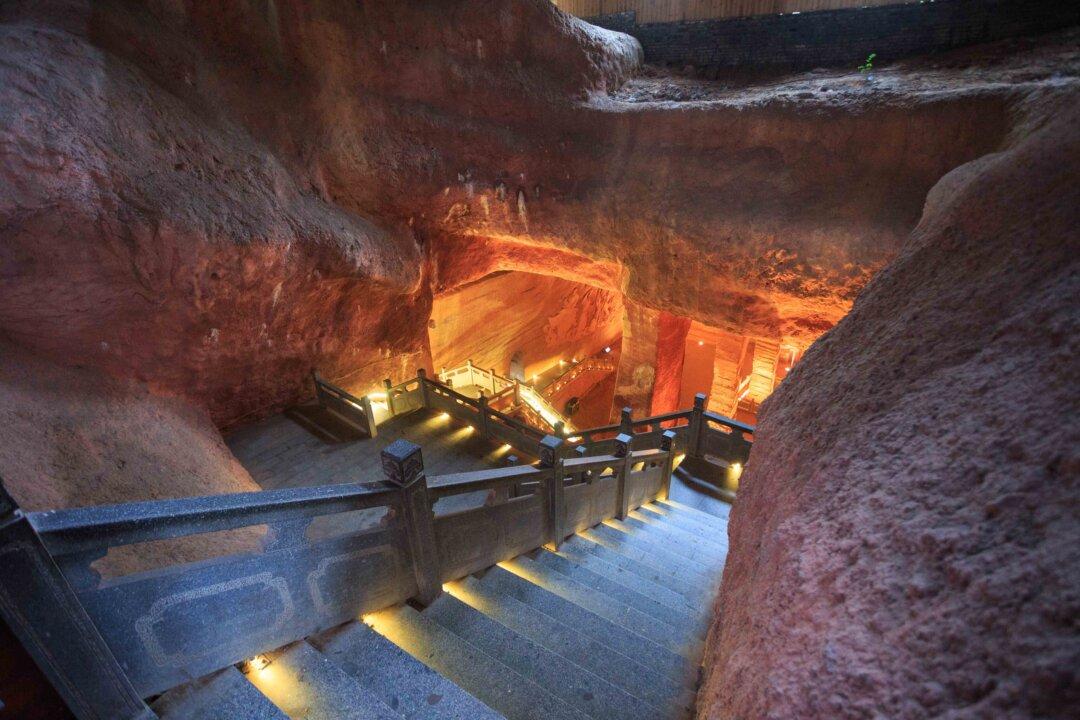Near the village of Shiyan Beicun in Zhejiang province, China, lies the Longyou caves—an extensive, magnificent, and rare underground realm, considered in China to be “the ninth wonder of the ancient world.” The Longyou grottoes, which are thought to date back at least 2,000 years, represent one of the largest underground excavations of ancient times and are an enduring mystery that has perplexed experts from every discipline that has examined them. Scientists from around the world in the fields of archaeology, architecture, engineering, and geology have absolutely no idea how they were built, by whom, or why.
First discovered in 1992 by a local villager, 36 grottoes have now been discovered, covering a massive 36,000 square yards (30,000 square meters). Carved into solid siltstone, each grotto descends around 40 yards (30 meters) underground and contains stone rooms, bridges, gutters, and pools. There are pillars evenly distributed throughout the caves which support the ceiling and walls. The surface of the ceiling and columns are uniformly decorated with chisel marks in a series of parallel lines. Only one of the caves has been opened for tourism, chosen because of the stone carvings found inside which depict a horse, fish, and bird. The Longyou caves truly are an enigma and here we will explore ten mysteries that are still unexplained despite more than two decades of research.





